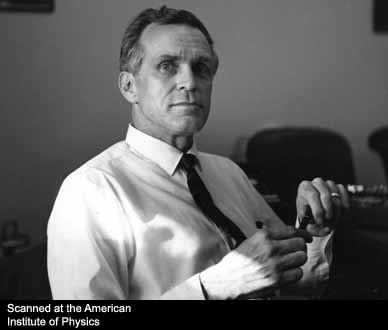Some Recent Experimental Tests of the "Clock Paradox"
Year: 1960
Recent experiments by Pound and Rebka on the temperature dependence of the M?ssbauer effect in Fe57, and by Hay, Schiffer, Cranshaw, and Egelstaff using an Fe57 absorber on a rotating drum are shown to provide the first direct experimental verification of the time-keeping properties of accelerated clocks such as occur in the classic "clock paradox" of relativity. In the experiment by Pound and Rebka, the thermal vibrations of the lattice impart rms velocities of about 10-6c, and nearly continuous, randomly-oriented accelerations of the order of 1016g to both the source and the absorber nuclei. In the experiment by Hay et al. the acceleration of the absorber was 6?104g. The photon provides continuous communication of time data between the two nuclei for the duration of the "journey" (the emission time of the quantum). In each case the observed fractional frequency shift Δf/f0 which occurs between the source and the absorber is found to be -vs2/2c2+va2/2c2, where vs and va are the rms velocities of the source and the absorber nuclei, respectively. These results are in quantitative agreement with the generally accepted calculations for the "clock paradox", in which two clocks pursue independent paths (at least one of which involves accelerations) in a common inertial frame, but are compared at two or more points where they coincide in space and time. The temperature-dependent experiments also demonstrate that accelerations of the order of 1016g, arising from lattice vibrations, produce no intrinsic frequency shift in Fe57 nuclei to an accuracy exceeding 1 part in 1013.


